[Editor’s note: The Tyee is over the moon to share that we’ve partnered with Greystone Books to publish ‘Points of Interest,’ an anthology that marks our 20-year anniversary by collecting 30 powerful, funny, beautiful place-based essays and reported features that take readers on an eclectic literary road trip through B.C.
‘Points of Interest’ will be released and available for sale in bookstores starting April 23. Vancouver readers are invited to join us to celebrate at our book launch, held that same day, at Steamworks — it’s free, and you can register via Eventbrite.
Below, we’re sharing the first of three excerpts from the book this week: Michelle Cyca’s look at Granville Island’s new technique for discouraging area seagulls from scoring a free lunch from tourists, which originally ran in these pages on Sept. 8, 2022.]
If you overheard Chuck DeCoste talking about his job, you might get the impression that he works in a kindergarten classroom. He talks a lot about positive reinforcement, discouraging bad behaviours, and the importance of being a good caregiver.
But DeCoste doesn’t work with kids. He’s the Vancouver regional co-ordinator for the Raptors, a wildlife management and conservation organization, and spends his days communing with hawks, eagles and falcons.
You might spot him or one of his colleagues at BC Children’s Hospital, chasing off nesting pigeons, or at Vancouver International Airport, preventing birds from flying into your airplane. (The Canada goose, incidentally, is the third-deadliest species when it comes to aircraft collisions.)
I first noticed them at Granville Island, where members of the Raptors team use hawks to chase away gulls and crows. From my counter seat in the market, facing False Creek, I watched as a man wearing a gauntlet — the thick leather glove worn by a falconer — lifted his arm to meet a brown bird, roughly the same size as a typical seagull, which I now know is called a Harris’s hawk. It was hard to tell whether they were performing or working as they posed agreeably for photos with curious tourists.
But then I noticed something else. The people eating outside in the crisp fall air seemed cavalier, carefree, not at all concerned that a crow or seagull might swoop over their shoulder at any moment in pursuit of french fries. I grew up going to Granville Island, which gets eight to 10 million visitors a year. As a kid, I understood that a bird stealing your lunch was a rite of passage and a lesson in situational awareness. Now those avian Artful Dodgers were nowhere to be found. The keen-eyed brown bird was not just a magnet for selfies; it had also transformed the environment.
Granville Island is not really an island. “It’s mudflats and a sandbar,” says Tom Lancaster, the general manager. Built over a century ago as an industrial site, it once housed nothing but mills and factories; there was no green space on the island at all until the 1970s. And while some of the original tenants are still operating on the island, including the cement plant (famous for its cheerfully painted 70-foot-tall silos) and a steel fabricator, it’s also become a quasi-natural space that almost looks like it was always part of the landscape.
“What we have now is a dumbed-down version of that interface with nature. We have trees planted on this artificial island, and those are now home to birds and squirrels,” says Lancaster. “But there’s no way to peel back the layers and imagine what this place looked like 300 years ago.” In its artificiality, it inhabits a kind of paradox: close to nature but not of it.
Still, each year it brings visitors and residents into close contact with the many species who live there — “lots of birds, squirrels, raccoons, occasionally a coyote, and many rodents,” according to Lancaster, who adds that rats have been largely evicted. (“Once you get a large enough mouse population, they actually chase the rats away.”) In the water, visitors can spot harbour seals and otters dining on herring and anchovies — two fish species that have returned to False Creek in recent years as a result of habitat restoration.
The proximity to nature is part of Granville Island’s singular appeal, but it can also lead to problems. In 2021, a family of river otters took up residence, tunnelling under the island to build their dens and causing a sinkhole. “Which is the only reason we found out about them,” says Lancaster.
Another problem, of course, is the food-snatching birds. “You would normally see raptors in the wild feeding on seagull eggs, keeping things in check,” Lancaster says. “But there’s no predator-prey balance here at all. In some ways, the seagulls are the predators now. They’ll prey on anyone with a bagel in their hands.”
Bringing the Raptors to the island restores a simulacrum of natural order — and it also shifts how humans and animals coexist on the island.
A hundred years ago on Granville Island, Lancaster says, people didn’t want to work with nature at all. The idea was to fight hard against it and tame it. “We imposed ourselves on an environment that was stewarded by Indigenous peoples long before settlers arrived,” he says. And yet, as a tunnelling family of river otters occasionally reminds us, nature is resilient. Animals adapt to human trickery, which gives a program like the Raptors an advantage.
“Wild birds don’t habituate to the presence of our raptors, because they’re real predators,” says DeCoste. “If you look at the United States, they’re still using things like firearms to clear birds from that sky. So let’s say you shoot six ducks — the next six who pass through aren’t going to learn any lessons from that. But when we put a falcon up in the sky, ducks are flying by and seeing that there is a predator in the air, so they start avoiding the area.”
Over time, the birds are conditioned to avoid places like the airport and Granville Island. The Raptors website cheerfully describes this practice as “creating a landscape of fear.”
The Raptors use different species for different purposes. Harris’s hawks, whose natural range extends from the southwestern United States to South America, are particularly well-suited to Granville Island. The ones used by the Raptors are born in captivity; they don’t take birds from the wild.
“Size-wise, they’re between a crow and a raven,” says DeCoste. “But they’re the only true social raptor species in the world. They’re a pack animal. So ours are really well-socialized, and they can be somewhere like [Granville Island] without getting stressed out. They’re really friendly and totally at home here.”
Choosing the right bird for the job is an art. “I compare it to golf — you need the right club,” says DeCoste.
This observation presents an excuse to segue into a delightful tidbit of etymological trivia. “Actually, the word caddy is an old falconry term, which used to be cadge,” DeCoste says. “Back in the day, kings or queens would have a falconer who would train all their birds, and when they hunted, the cadge would have this cool portable perch with all these different birds sitting around them. Depending on the quarry, the cadge would pick the right bird for the job. And that’s what we do.”
At the airport, the Raptors team uses eagles and falcons to chase birds away from aircraft. “I work a lot with Hercules — he’s a bald eagle, and he’s my big, beautiful baby boy,” says DeCoste. “We use him primarily to deter snow geese, because they react powerfully to bald eagles, who are their natural predators.”
At Granville Island, DeCoste says, the primary goal is keeping birds away from human food — which is good for them too. When birds have access to human food and trash, it inflates their populations, making them more susceptible to pandemics and disease. Human food and trash are also higher in nitrates — meaning the birds’ feces is too, which can cause algae blooms in the lakes where they hang out.
This prompts me to ask DeCoste a followup question: Aren’t the raptors tempted by the bagels and heaps of garbage too? DeCoste, sounding like a kindergarten teacher again, says it’s all about giving positive reinforcement and keeping your cool.
Let’s say one of the birds decides it wants to go snack on food from the face of the landfill, DeCoste says. “That’s just a hawk being a hawk: it sees food, it wants it, it eats it. You can’t blame the bird.”
“Instead, you have to take a hard look at what your co-workers are doing, so you can figure out how to shift his focus to something else. Maybe you fly him further from the garbage, or maybe you offer him more tidbits. We give them a lot of chicken and quail — we try to keep their diets as close to their natural diet as possible,” DeCoste says.
He admits falcon training is not an easy skill to teach. “So much of it is based on feel. You’re learning the body language of the bird. It’s not like learning how to use a skill saw, which is going to act the same way every time you plug it in and press a button. You need to learn to make relationships, and just like making relationships with people, there’s no formula that works every time. You’re learning to open yourself up to a bird, to watch and pay attention, to make them comfortable. So much of our job is about positive reinforcement, so that when a bird goes flying and you ask them to come back, they choose to come back.”
Once you’ve established that bond, the job is simple: let the raptor do what they were born to do — watch it fly around and have fun rebuffing other birds, feed it lots of rewards and make sure it’s happy.
For DeCoste, developing relationships with his avian colleagues has been the best part of the job — particularly the bond he has with Hercules. “When I started this job, I was actually reluctant to work with a predator that big,” DeCoste admits. “They’re daunting. They’re so strong. They absolutely have the capacity to hurt you. But the surprising thing has been the richness and depth of the relationship that I’ve formed with him, and just seeing that these birds are more than scary predators. They actually have these really amazing personalities and can be quite sweet.” Hercules, DeCoste says, likes to play fetch as much as any playful Labrador.
Back on Granville Island, Tom Lancaster says the success of the raptor program speaks for itself. “It tells a story, and it’s educational,” he says. “People are exposed to something they’d never have seen otherwise.”
Lancaster just hopes that people can learn to adapt their behaviour too. “We have signs up all over the island, and yet we still see people feeding the birds,” he says. “When we do, we gently go over to them and take the opportunity to explain that feeding wildlife is inherently dangerous, and just a bad thing to do.”
But the practice persists. “People think, ‘I have a bird feeder at home — why shouldn’t I feed these birds?’” Lancaster says.
The Raptors have demonstrated that even a seagull can learn to adjust when presented with an appropriate deterrent. Maybe humans could benefit from being chased by a falcon every once in a while too.
Next excerpt on Wednesday: A meditation on the regenerative power of winter in Haíɫzaqv (Heiltsuk) territory by ’Cúagilákv (Jess Housty). ‘Points of Interest’ is out from Greystone Books on April 23. ![]()
Read more: Books, Environment


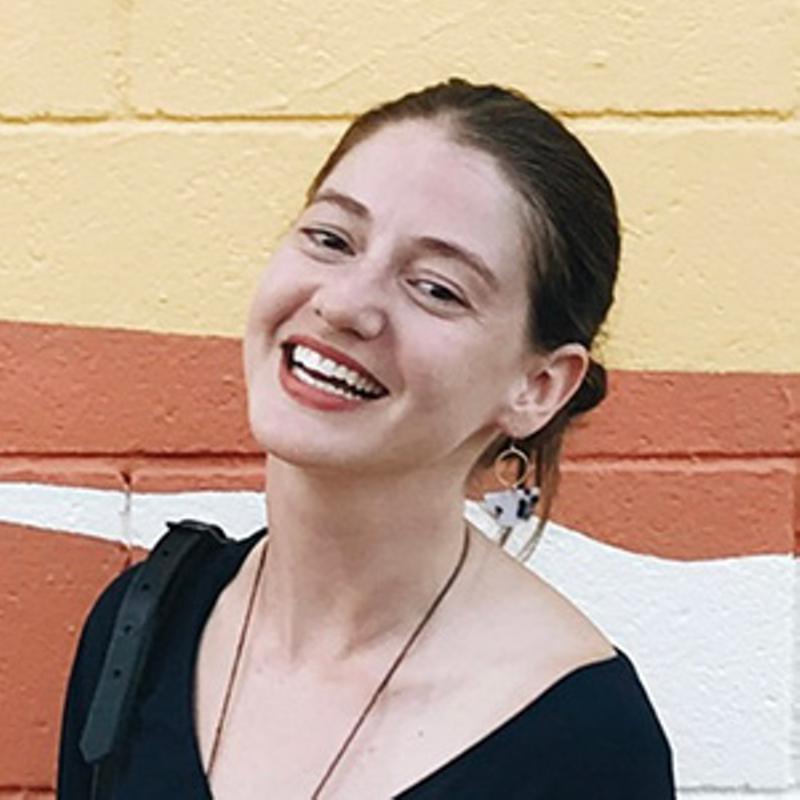

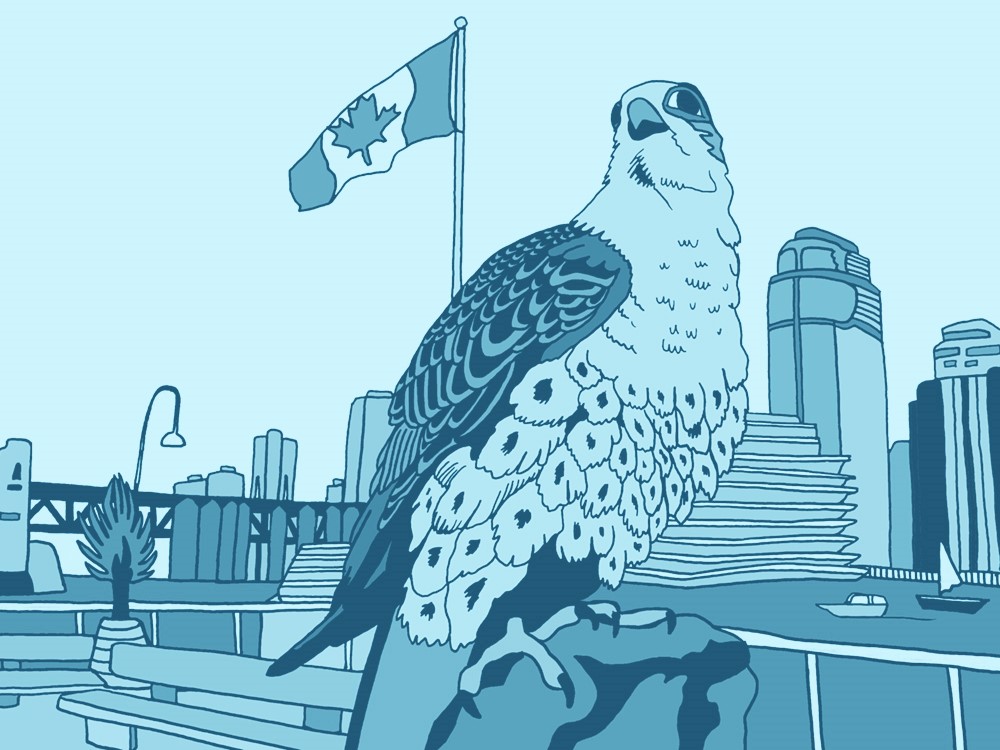
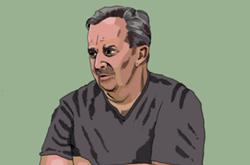
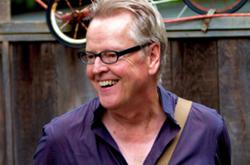

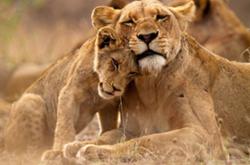








Tyee Commenting Guidelines
Comments that violate guidelines risk being deleted, and violations may result in a temporary or permanent user ban. Maintain the spirit of good conversation to stay in the discussion and be patient with moderators. Comments are reviewed regularly but not in real time.
Do:
Do not: